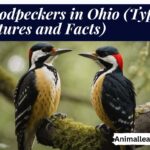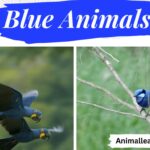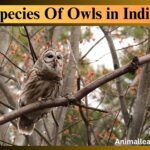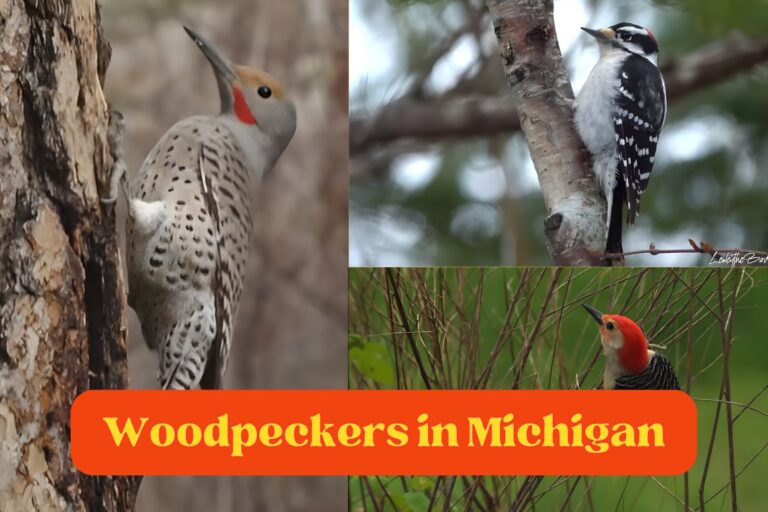Top 20 White Birds: Nature’s Graceful Angels

The graceful white birds glided effortlessly through the azure sky, their pristine plumage contrasting vividly against the backdrop of the endless blue. White birds symbolize purity and peace, while purple birds captivate with their regal and mesmerizing colors.
These birds are readily distinguished throughout the year because of their diverse sizes and forms. Some have red, black, or yellow legs, while some have black, red, or yellow beaks.
When you see white birds, you probably picture herons, cranes, Woodpeckers, or owls, and you’d be correct—these are some of the most well-known species.
White Birds
Contents
- 1 White Birds
- 1.1 White Pelican
- 1.2 Snowy Owl
- 1.3 Arctic Tern
- 1.4 Little Egret
- 1.5 Snow Goose
- 1.6 White Ibis
- 1.7 Ross’s Gull
- 1.8 Tundra Swan
- 1.9 Ivory Gull
- 1.10 Whooping Crane
- 1.11 Trumpeter Swan
- 1.12 Snowy Plover
- 1.13 Little Tern
- 1.14 Glaucous Gull
- 1.15 Little Gull
- 1.16 Rock Ptarmigan
- 1.17 Snow Bunting
- 1.18 Masked Booby
- 1.19 White Hawk
- 1.20 White Dove
- 2 Exploring Small White Birds
- 3 FAQs
| White Pelican | Snow Goose |
| Snowy Owl | White Ibis |
| Arctic Tern | Ross’s Gull |
| Little Egret | Tundra Swan |
| Ivory Gull | Whooping Crane |
| Trumpeter Swan | Snowy Plover |
| Little Tern | Glaucous Gull |
| Little Gull | Rock Ptarmigan |
| Snow Bunting | Masked Booby |
| White Hawk | White Dove |
Delve into the fascinating world of white birds that soar through the skies and capture our hearts with their grace and beauty. From charming doves to petite finches, this collection of bird names and photos showcases the elegance of these avian wonders.
Discover the types of white birds, their unique features, and where they can be found. Whether you’re an enthusiast or simply seeking to appreciate the natural world, this guide provides insights into the diversity of these small white birds that grace our skies.
White Pelican
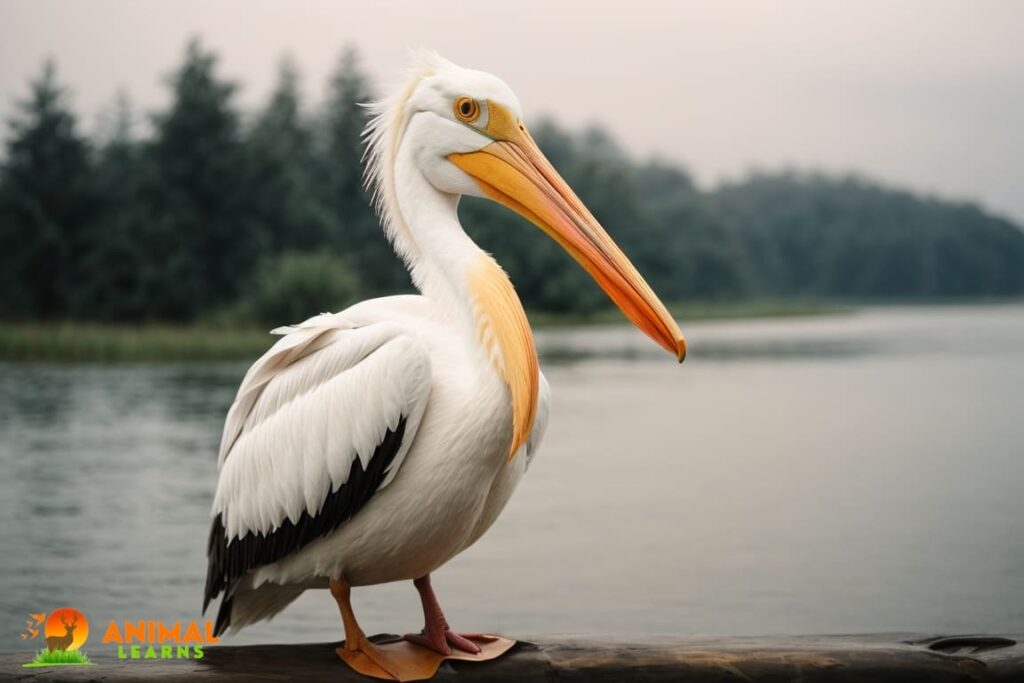
| Characteristic | Information |
| Size | Large, up to 6 feet in length |
| Weight | 10 to 20 pounds (4.5 to 9 kg) |
| Color | Predominantly white with black wingtips |
| Location | North America, wetlands and lakes |
| Flying Height | Typically flies low over water |
| Diet | Fish, forage cooperatively in groups |
Pelecanus erythrorhynchos, the scientific name for the White Pelican, is a majestic bird distinguished by its brilliant white plumage. These enormous ducks have an astonishing wingspan of up to nine feet.
They are predominantly white with black wingtips. North American white pelicans are located in marshes and lakes, where they cooperate to hunt by driving fish into shallow water. Because of their requirement for camouflage in their underwater environment, they have a startling white look that helps them approach their prey discreetly.
Snowy Owl
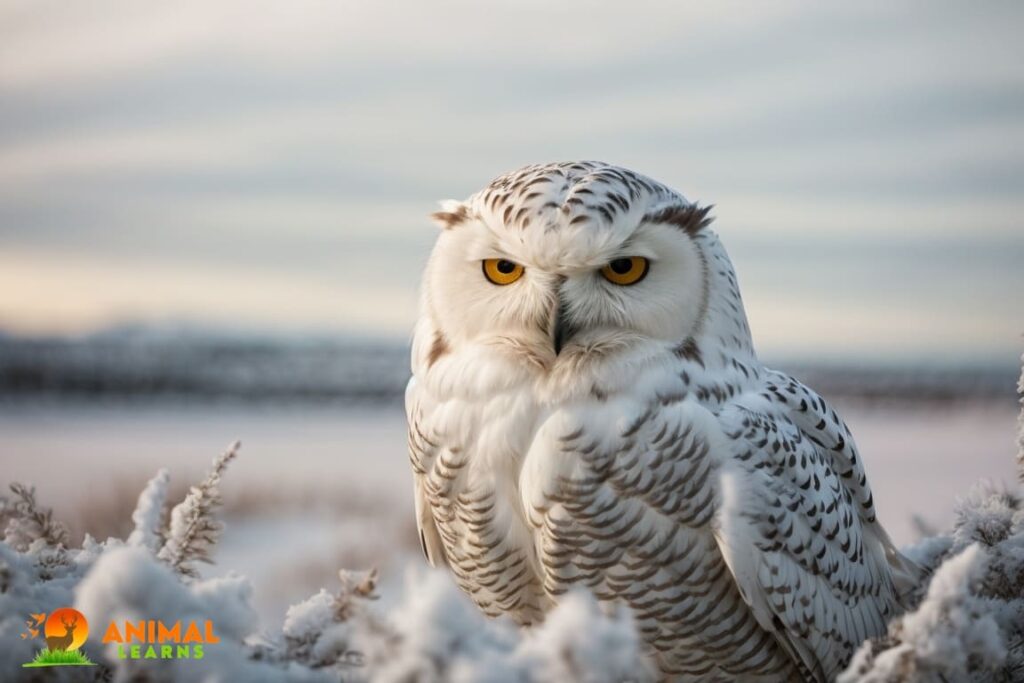
| Characteristic | Information |
| Size | Large, up to 27 inches in length |
| Weight | 3 to 6.6 pounds (1.4 to 3 kg) |
| Color | Pristine white with black markings |
| Location | Arctic regions, tundra and open areas |
| Flying Height | Soars high during hunting, then low to catch prey |
| Diet | Mainly rodents, occasional birds |
The Snowy Owl, or Bubo scandiacus, is a fascinating bird that is well-known for its immaculate white feathers. These are some of the rare birds that are absolutely white, and they are native to the Arctic areas.
Their white plumage provides good concealment in their snow-covered environment and superb insulation in cold weather. The snowy owl is a well-known emblem of the North due to its enormous size and eye-catching golden eyes.
Arctic Tern

| Characteristic | Information |
| Size | Medium-sized, around 12 to 15 inches |
| Weight | Approximately 3.5 ounces (100 grams) |
| Color | Silvery-white with black cap and beak |
| Location | Silvery white with black cap and beak |
| Flying Height | High during migrations, lower during hunting |
| Diet | Fish and invertebrates, caught in flight |
A magnificent migratory bird with a mostly white look is the Arctic Tern, Sterna paradisaea. These white birds are distinguished by their elegant flying and silvery-white coloring. They travel an incredible distance every year, from the Arctic to the Antarctic and back, making their migration the longest of any bird.
They are able to blend in with the snowy landscapes of the Arctic because of their white pigmentation, which also helps them reflect extra sunlight and keep cool throughout the long Arctic summers.
Little Egret

| Characteristic | Information |
| Size | Medium-sized, around 22 to 26 inches |
| Weight | Approximately 12 to 18 ounces (340 to 510 grams) |
| Color | Predominantly white with black legs, beak, and feet |
| Location | Shallow wetlands, estuaries, and coastal areas |
| Flying Height | Low, wades through water while hunting |
| Diet | Small fish, invertebrates, and amphibians |
The Little Egret, or Egretta garzetta, is a tiny species of heron with graceful white plumage. This bird’s slim build and black beak, foot, and legs make it easy to identify. Little
Egrets may be found in shallow wetlands and estuaries, where they can be seen gracefully wading through the water and hunting tiny fish and invertebrates with their white plumage to their advantage.
Their immaculate white feathers work as a visual enticement to draw in prey in addition to acting as concealment.
Snow Goose

| Characteristic | Information |
| Size | Medium to large, around 25 to 33 inches |
| Weight | 5 to 7 pounds (2.3 to 3.2 kg) |
| Color | Predominantly white with black wingtips |
| Location | Breeds in Arctic, winters in southern regions |
| Flying Height | Varies, can fly at different altitudes |
| Diet | Primarily herbivorous, feeding on plants and grains |
Anser caerulescens, the Snow Goose, is a medium-sized species of waterfowl with characteristic black points on its wings. Its main color is white.
These birds are renowned for their spectacular migrations, which see them travel in big groups from their Arctic breeding sites to their southern US and Mexican wintering habitats.
Their white plumage is a necessary adaptation for their harsh Arctic habitat, helping them blend into snowy environments and reflecting excess heat.
White Ibis
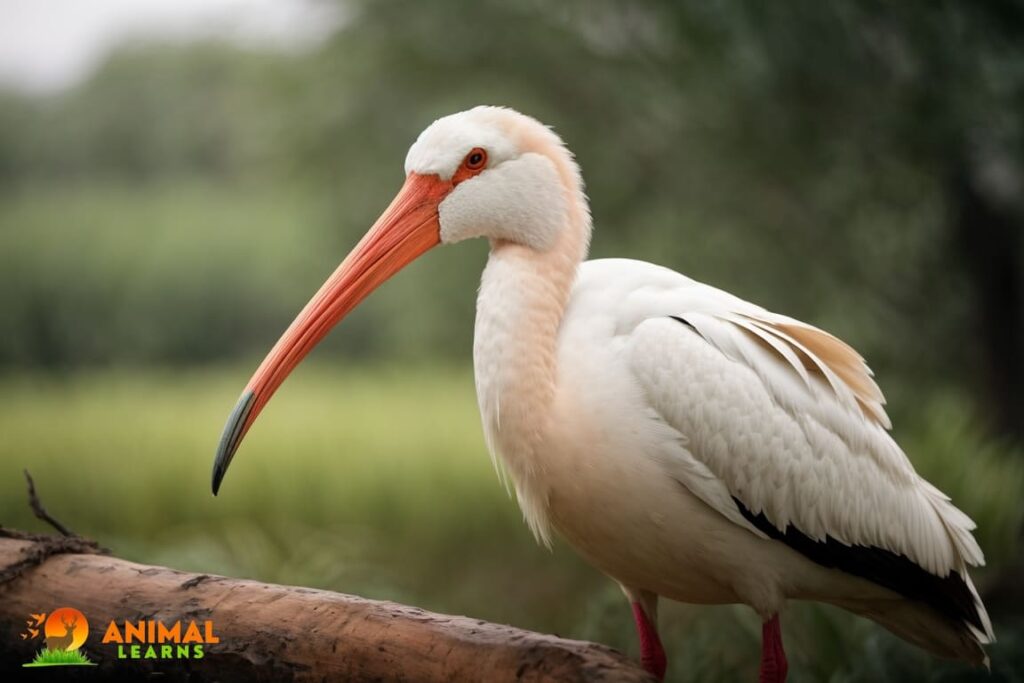
| Characteristic | Information |
| Size | Medium-sized, around 22 to 27 inches |
| Weight | Approximately 1.6 to 2.6 pounds (0.7 to 1.2 kg) |
| Color | Predominantly white with red facial skin and legs |
| Location | Wetlands, marshes, and coastal areas |
| Flying Height | Low, wades in shallow waters foraging |
| Diet | Crustaceans, small fish, and invertebrates |
The White Ibis, Eudocimus albus, is a visually arresting wader bird that has long, curved bills and mostly white plumage. Wetlands, marshes, and coastal regions are frequent habitats for these birds.
An important adaption for their environment is their white coloring, which helps them blend in when searching for tiny fish and crustaceans in shallow waters.
Their white plumage contrasts sharply with their red legs and face, which enhances their visual attractiveness and makes them easier to identify in their favored habitats.
Ross’s Gull

| Attribute | Information |
| Size | About 12 inches (30 cm) |
| Weight | Approximately 4-6 ounces (115-170 grams) |
| Color | Pale pink with a black “M” shape on its neck and black legs |
| Location | Arctic and subarctic regions during breeding; Russia, Canada, and Alaska |
| Flying Height | Low, often hovers close to the water |
| Diet | Insects, small fish, and crustaceans |
The gorgeous Arctic bird known as Ross’s Gull (Rhodostethia rosea) is prized for its delicate, rosy-colored plumage. The distinctive aspect of this bird, despite its name, is not its mostly white look but rather its soft pink wash. This little bird, which flies in the high Arctic, is only around 12 inches long.
This gull is a rare and intriguing sight amid the frozen landscapes of the far north, thanks to its delicate pinkish tints and ability to resist extreme cold.
Tundra Swan

| Attribute | Information |
| Size | 45-58 inches (115-147 cm) |
| Weight | 12-30 pounds (5.4-13.6 kg) |
| Color | White plumage with a black bill and feet |
| Location | Breeding in the Arctic; migratory to North America |
| Flying Height | High, during migration |
| Diet | Aquatic plants, grasses, and grains |
The magnificent waterfowl species known as Cygnus columbianus, or the Tundra Swan, is distinguished by its white plumage, which acts as good protection against the bitter cold of the Arctic. These enormous swans, which may reach a six-foot wingspan, breed in the arctic areas of North America.
Their white feathers reflect too much sunlight and help them blend in with their wintry environment. The beautiful and exquisite appearance of tundra swans, both in flight and on calm Arctic lakes, is highly appreciated.
Ivory Gull

| Attribute | Information |
| Size | Approximately 16-19 inches (40-48 cm) |
| Weight | 13-18 ounces (370-510 grams) |
| Color | Predominantly white with black eyes, bill, and legs |
| Location | Arctic regions, including the North Pole |
| Flying Height | Low, skimming over ice and open water |
| Diet | Scavenges on carrion, fish, and invertebrates |
With its immaculate white plumage, the Ivory Gull (Pagophila eburnea) is a remarkable representation of Arctic purity. It is a medium-sized gull, measuring around 16 inches on average. This gull is a master of the frozen terrain, inhabiting only the Arctic, and it mostly eats marine invertebrates.
Its white plumage gives it perfect camouflage against snow and ice, making it almost undetectable when it forages on frozen seashores for food.
Whooping Crane
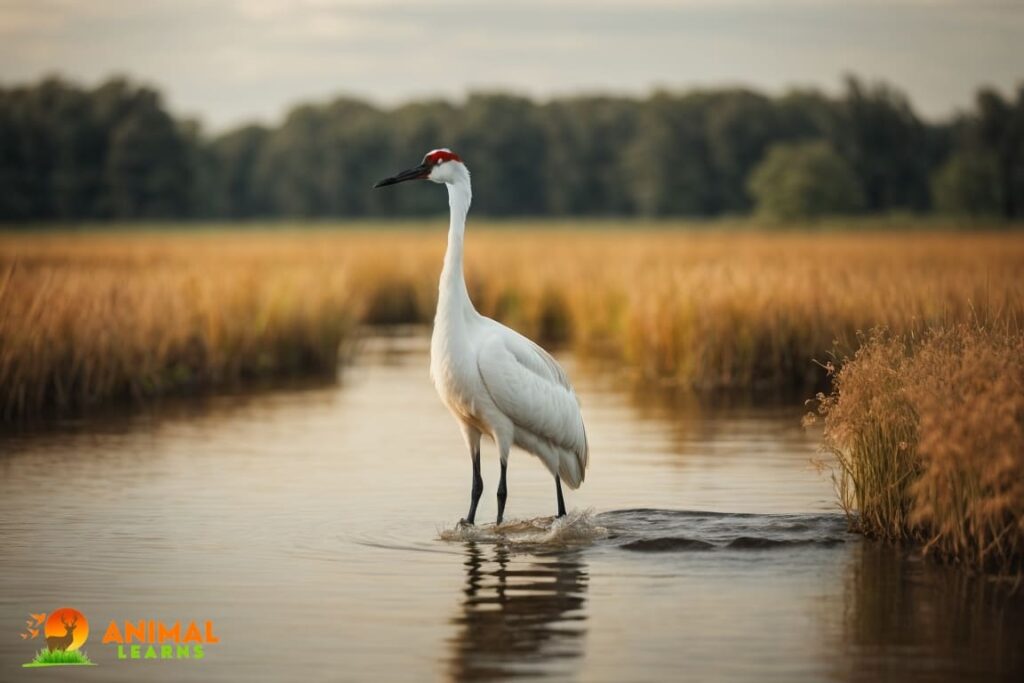
| Attribute | Information |
| Size | Around 5 feet (150 cm) tall |
| Weight | Approximately 15-17 pounds (6.8-7.7 kg) |
| Color | White plumage with a red crown and black wingtips |
| Location | Breeding in North America; migratory to southern U.S. |
| Flying Height | High, during migration |
| Diet | Omnivorous, feeding on plants, small animals, and insects |
The Whooping Crane, a majestic white bird, is known for its striking appearance. This endangered species serves as a symbol of hope for conservation efforts among white birds. The Whooping Crane, or Grus americana, is a bird of North America that is well-known for its magnificent white plumage and large size.
At five feet tall, these cranes are among the tallest birds in North America. Dedicated conservation efforts have helped them recover from the verge of extinction.
In addition to being aesthetically pleasing, their white feathers are essential for thermoregulation, which enables them can withstand the variety of temperatures they pass through during migration.
Trumpeter Swan
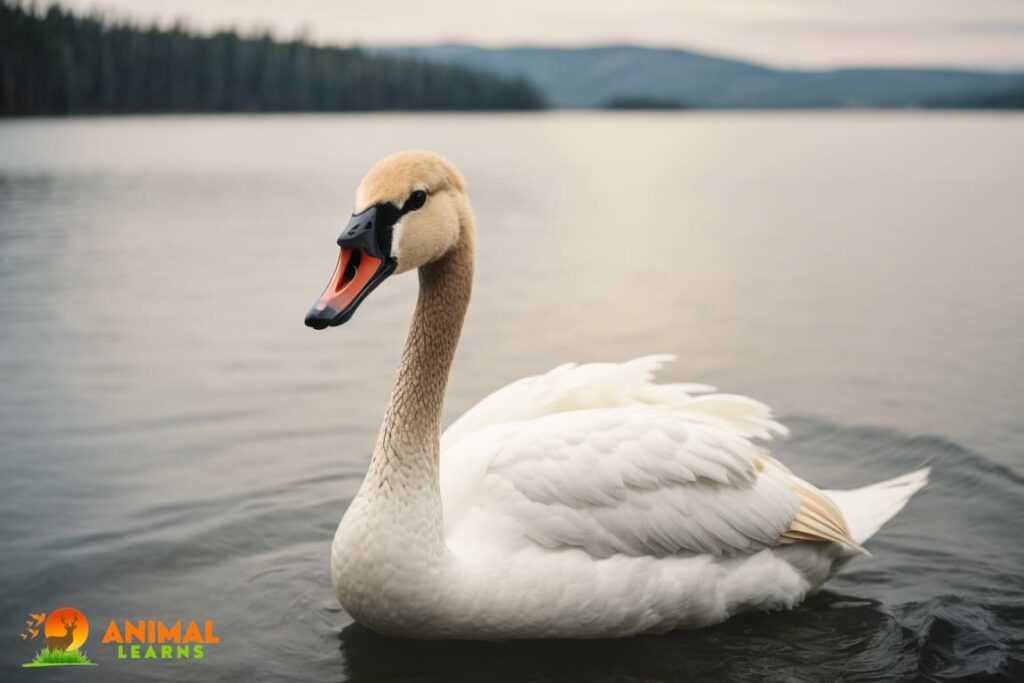
| Attribute | Information |
| Size | 4.5-5.5 feet (1.4-1.7 meters) |
| Weight | 20-30 pounds (9-14 kg) |
| Color | White plumage with a black bill |
| Location | North America, including Canada and the U.S. |
| Flying Height | Moderate altitude during migration |
| Diet | Aquatic plants, pondweeds, and submerged vegetation |
The biggest waterfowl in North America is the Trumpeter Swan (Cygnus buccinator), another member of the swan family with pure white plumage. These swans, with their nearly eight-foot wingspan, are symbols of elegance and grandeur. All over North America, marshes, lakes, and rivers are home to them.
They are a striking and alluring species because of their white feathers, which are used for courting displays in addition to controlling body temperature.
Snowy Plover
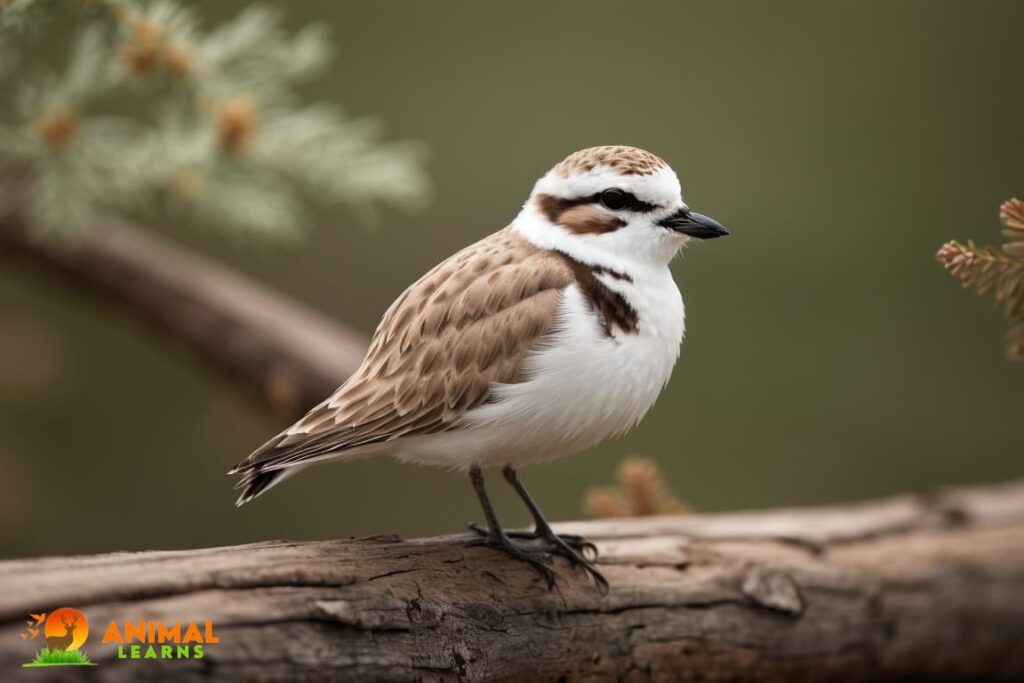
| Attribute | Information |
| Size | About 6-7 inches (15-18 cm) |
| Weight | Approximately 1-2 ounces (30-60 grams) |
| Color | Light brown to white with dark markings |
| Location | Coastal regions and sandy shorelines |
| Flying Height | Low, close to the ground |
| Diet | Insects, small crustaceans, and worms |
Sandy coastal environments are home to the little shorebird known as the Snowy Plover (Charadrius nivosus). Its characteristic light-colored sand tint helps it fit well with its coastal surroundings.
These little birds, which are around 6 inches in length, are quite good at finding minute crustaceans along shorelines. Their sandy hue, albeit not completely white, is evidence of their amazing environmental adaption.
Little Tern

| Attribute | Information |
| Size | Around 9-10 inches (23-25 cm) |
| Weight | Approximately 1.5-2 ounces (40-60 grams) |
| Color | White plumage with a black cap and bill |
| Location | Coastal areas, estuaries, and sandy beaches |
| Flying Height | Low, skimming over water and diving for fish |
| Diet | Fish and small invertebrates |
The Little Tern, Sternula albifrons, is a little coastal bird that blends well with its rocky and sandy habitat because of its mostly white appearance. These nimble birds, which are around 9 inches long, are renowned for their swift and elegant flying.
They dive into the water to collect tiny fish, which make up the majority of their food. When they forage along beaches, their white feathers offer them a crucial element of concealment.
Glaucous Gull

| Attribute | Information |
| Size | 27-30 inches (68-76 cm) |
| Weight | Approximately 3.3-4.4 pounds (1.5-2 kg) |
| Color | White plumage with gray markings |
| Location | Arctic regions and coastal areas |
| Flying Height | Medium, often soaring over open water |
| Diet | Opportunistic scavenger, feeding on fish, carrion, and other prey |
The Glaucous Gull, a striking member of the family of white birds, is known for its pristine plumage and impressive coastal presence. This gull is one of the biggest in the world and may be found in the Arctic and subarctic regions.
Its white coloring helps it regulate its body temperature and blend in with the icy surroundings, which enables it to hunt for a variety of foods, such as fish and carrion scraps.
Little Gull

| Attribute | Information |
| Size | About 10 inches (25 cm) |
| Weight | Around 2.1 ounces (60 grams) |
| Color | White plumage with a distinctive black cap |
| Location | Breeds in Europe, migratory to Africa and Asia |
| Flying Height | Low over water, often hovering |
| Diet | Insects, fish, and small invertebrates |
The adorable, little Little Gull (Hydrocoloeus minutus) has white plumage and a hint of gray on its wings. It is a freshwater fish that lives around the coasts of Europe and Asia. It is about 10 inches long.
These swift aviators mostly eat tiny fish and insects. Their feather mix of gray and white helps them blend in with their surroundings and shields them from inclement weather.
Rock Ptarmigan
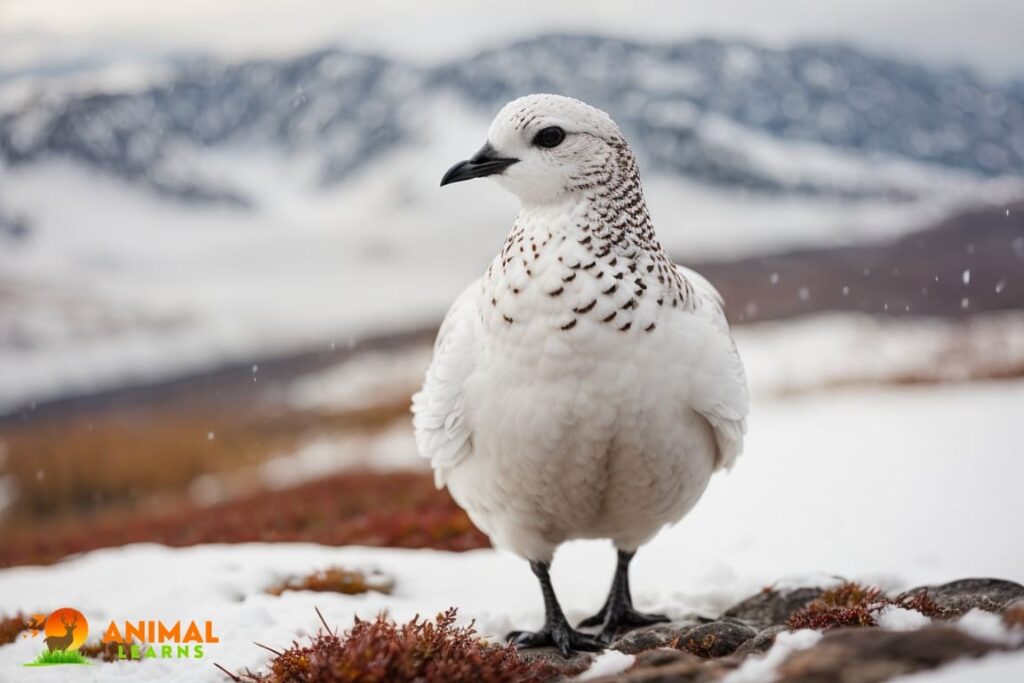
| Characteristic | Description |
| Size | 33-39 cm (13-15 inches) |
| Weight | 450-800 grams (1-1.8 pounds) |
| Color | Seasonal change: White in winter, brown with black markings in summer |
| Location | Arctic and subarctic regions, including North America, Europe, and Asia |
| Flying Height | Low to the ground, typically less than 10 meters (33 feet) |
| Diet | Herbivorous – feeds on plant matter, buds, leaves, and insects |
Lagopus muta, the formal name for the Rock Ptarmigan, is a bird of prey that is renowned for its extraordinary ability to adjust to the changing seasons. Its mottled white, brown, and black feathers help it blend with the rocky mountain environment during the summer months.
On the other hand, it changes into a mostly white bird during the severe Arctic and subarctic winters, which is a great way to protect against extremely cold temperatures.
Snow Bunting

| Characteristic | Description |
| Size | 15-18 cm (6-7 inches) |
| Weight | 25-40 grams (0.9-1.4 ounces) |
| Color | White plumage with black and brown markings |
| Location | Arctic and subarctic regions during breeding season; migrates to lower latitudes in winter |
| Flying Height | Medium altitude during migration, flying at various heights |
| Diet | Omnivorous – feeds on seeds, insects, and other small invertebrates |
Plectrophenax nivalis, the Snow Bunting, is adapted to the harsh Arctic tundra climate and does well there. Distinguished by its characteristic white plumage, it blends in well with wintry environments.
This bird’s insulation, which is primarily white, helps it withstand extremely low temperatures, demonstrating the flexibility of nature. Their ability to thrive in such harsh conditions is a testament to the adaptability of these remarkable white birds.
Masked Booby

| Characteristic | Description |
| Size | Approximately 71 cm (28 inches) |
| Weight | Around 1,200 grams (2.6 pounds) |
| Color | White plumage with black markings, blue-gray facial mask |
| Location | Tropical and subtropical coastal regions, primarily found in the Pacific and Atlantic Oceans |
| Flying Height | High-flying seabirds, often soaring over the open ocean |
| Diet | Predominantly piscivorous – feeds on fish, especially flying fish, and squid |
Sula dactylatra, the Masked Booby, is distinguished by its stunning white plumage and black mask-like eye markings. These characteristics provide sun-glare protection in tropical and subtropical seas, which goes beyond aesthetics. In warm maritime conditions, its white tint helps retain comfort by reflecting heat.
White Hawk
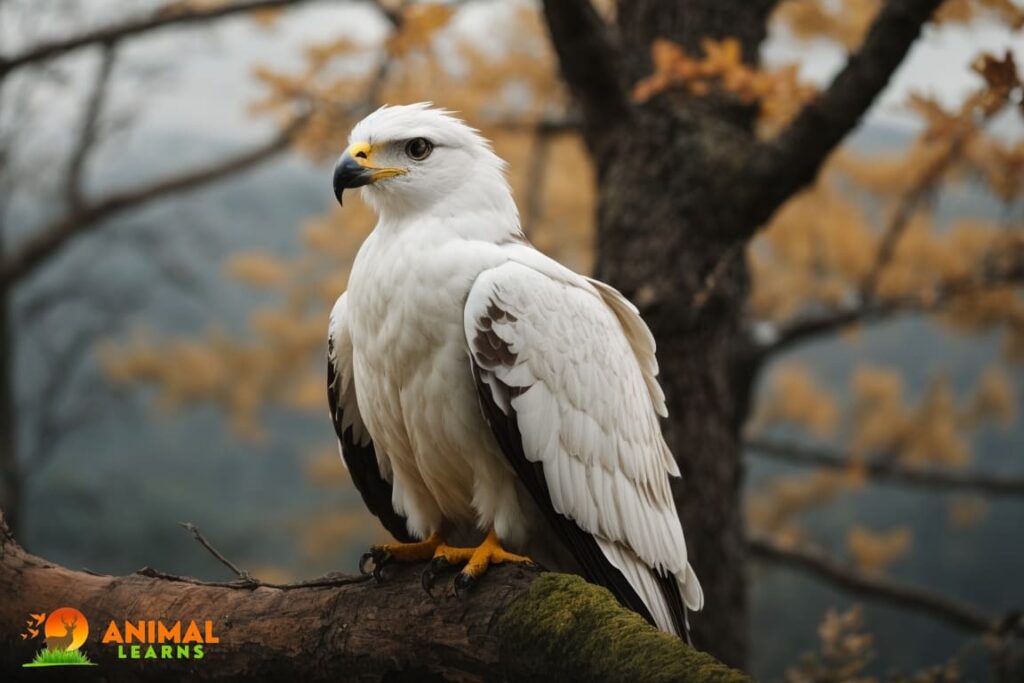
| Characteristic | Description |
| Size | About 46-56 cm (18-22 inches) |
| Weight | Approximately 700-1,000 grams (1.5-2.2 pounds) |
| Color | Predominantly white with some black markings on wings and tail |
| Location | Central and South America, including countries like Brazil and Argentina |
| Flying Height | Typically fly at moderate heights while hunting for prey |
| Diet | Carnivorous – preys on small mammals, birds, and reptiles |
The White Hawk, Leucopternis albicollis, is a striking raptor with mostly white plumage accented by black patterns and bright red eyes. It flies across the lush tropical woods of Central and South America with grace, blending in with the vivid green vegetation with its white coloring.
When it swoops down on prey, its white plumage adds a surprising element to its opportunistic hunting style.
White Dove
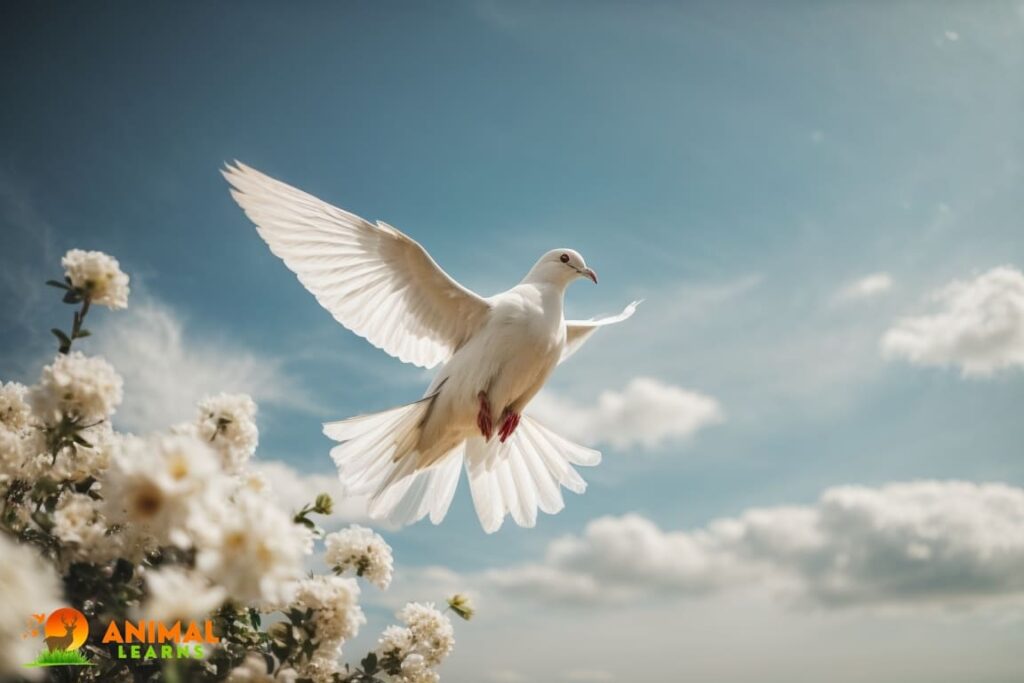
| Characteristic | Description |
| Size | 28-33 cm (11-13 inches) |
| Weight | About 150-200 grams (5-7 ounces) |
| Color | Pure white plumage |
| Location | Domesticated and found worldwide, especially in urban areas |
| Flying Height | Fly at low to moderate altitudes |
| Diet | Granivorous – primarily consumes seeds and grains, as well as small insects |
A tamed variation of the rock pigeon, the white dove represents purity and tranquility. Its immaculate white feathers are preferred for rituals and weddings. Throughout history, doves have been employed as messengers because of their legendary homing skills.
The White Dove symbolizes human admiration for the beauty of white birds in the avian world, but wild pigeons have a more variegated color palette.
Exploring Small White Birds
White birds hold a special place in the avian kingdom with their pristine plumage and distinct features. Explore the intriguing world of birds with white feathers, beaks, and even heads, and learn about their unique characteristics and locations.
From the Arctic regions to the warm shores of Florida, white birds can be found in diverse environments. Dive into the world of these elegant creatures and discover their significance, both in nature and in dreams, as well as their presence in various states like New York, Alaska, and more.
FAQs
What are some examples of white birds?
White Pelican, Snowy Owl, Little Egret, Snow Goose, and White Ibis are some examples of white birds.
Do all white birds have entirely white plumage?
Not necessarily. While many white birds have predominantly white plumage, they may have other colored features like black wings or colored beaks.
Where can you commonly find white birds?
White birds can be found in various habitats worldwide, including wetlands, coastal areas, Arctic regions, and even urban environments.
What do white birds typically eat?
White birds have diverse diets. They may feed on fish, insects, small mammals, plants, and even grains, depending on the species.
Why are some white birds kept as pets?
Birds like white doves are kept as pets due to their gentle nature, symbolism of peace, and suitability for domestication.




